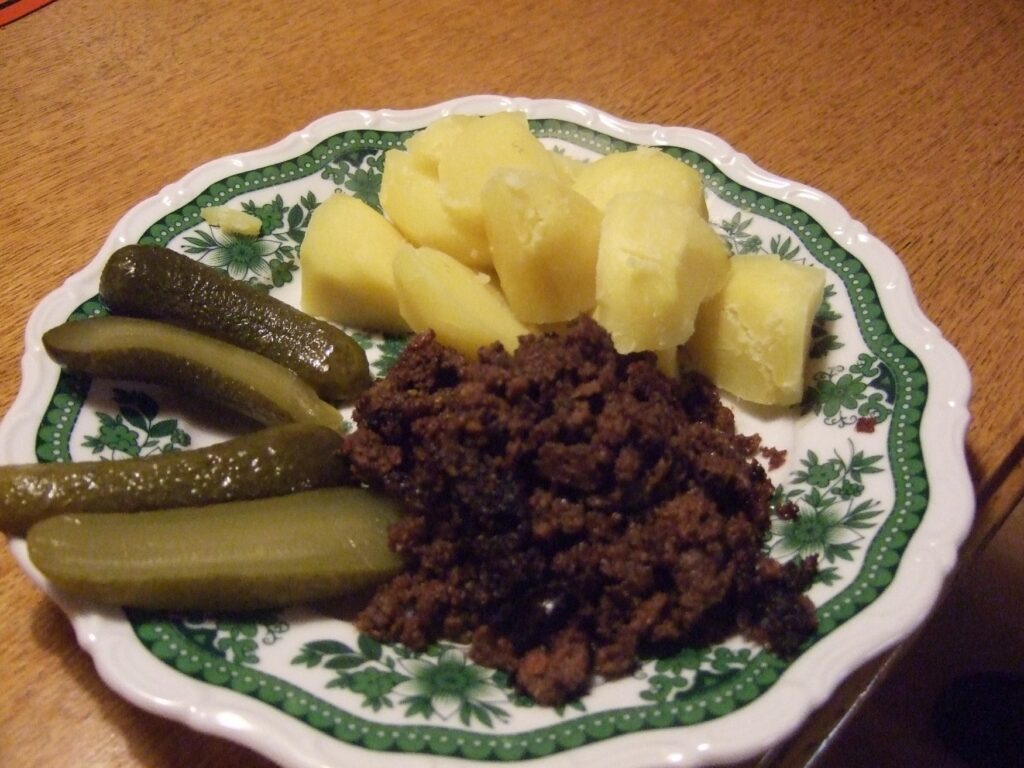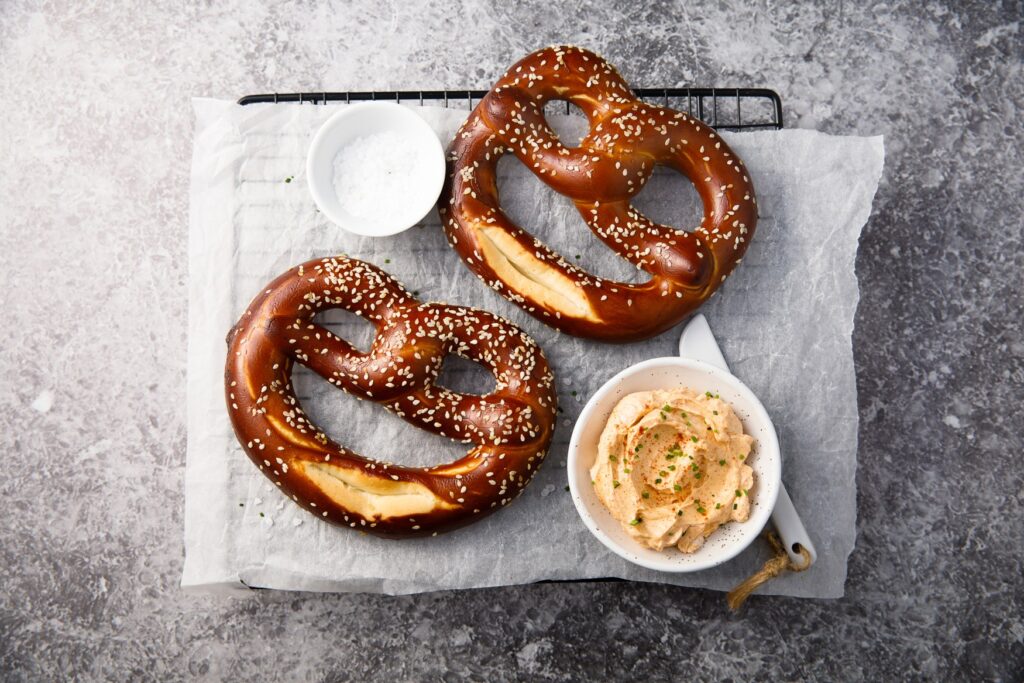We all like a feast for the eyes and sometimes quite literally. But what if nothing visually screams: eat me, you’ll like me? Then you need a little courage to taste. It’s worth it! So, take courage and dig into these German specialties.
Heaven on earth: Himmel un Äd
This dish is on the menu in every brewery in Cologne. We’ve often seen delighted guests from all over the world ordering the dish because of its romantic name. The traditional Rhenish name “Himmel un Äd” (the German word “Himmel” can both mean heaven or sky) goes back to the main ingredients of the classic dish: the apples symbolize the sky and the potatoes are harvested from the earth. We are not sure exactly how the black pudding “Flönz” that is also used plays into the name, but it is impossible to imagine life without it.

But beware: even if the people of Cologne peddle the notion that their favorite dish is a typical Cologne dish, this is not really correct. It is a traditional dish that is also known in Hesse, Westphalia, Lower Saxony, Mecklenburg and even the Netherlands. It has been known since around the 18th century.
Nowadays, one or two chefs actually manage to get this unusual meal onto the plate in an instagrammable way.
Where to eat? Himmel un Äd is served particularly well in the traditional restaurant “Bei d’r Tant” in Cologne. This is located very close to Cologne’s Neumarkt.
Nothing goes to waste: Weckewerk
The traditional dish “Weckewerk” was already known to the Brothers Grimm. Its appearance didn’t matter back then. The cooked sausage comes from northern Hesse and was originally, like many other things, a product of leftovers. Nevertheless, it is a classic of Hessian cuisine.

The basic mixture is now available in almost every butcher’s shop in North Hesse and can even be ordered online. It is made from minced pork, rinds and belly meat as well as the kettle stock. The sausage is stretched with stale bread rolls, which give the Weckewerk its name: “Wecke” or “Wegge” is the traditional name for bread rolls in Hesse.
If you buy the mixture ready-made in the butcher’s shop, you can fry everything together in a pan. Season with onions, salt and white pepper and serve with jacket potatoes and a pinch of caraway seeds. Maybe even add a pickled gherkin.
Where to buy? At Morth’s farm store in Witzhausen.
A sailor’s meal: Labskaus
The traditional North German dish does not come from Hamburg, as many people assume. Instead, it was brought to Hamburg. Labskaus, which was first mentioned by the English author Ned Ward in 1706, is a sailor’s dish.

Back then, feeding the crew was a challenge. Food had to be kept fresh for a long time and the smutje had to be inventive in order to feed as many mouths as possible for as long as possible. Another challenge back then was scurvy. A vitamin deficiency disease that cost many sailors their lives.
So a porridge made from cured beef, pickled beetroot, onions and potatoes was created on the ships of the seas. And if still available in the galley, it was served with matjes and a fried egg.
Do it yourself? Of course you can. Boil potatoes, steam onions, mash beef and beet with onions and potatoes. A Thermomix will certainly help.
Where to eat? Hamburg’s traditional restaurant “Old Commercial Room” has been around since 1795. The Labskaus tastes particularly good there.
Cheesy treat: Obazda
We here in the editorial team have a great fondness for the Bavarian cheese creation. And not just at Oktoberfest time. “Angebatzter, Angedrückter, Vermischter”, (all variants of “mixing/mixed”) which translates as Obazda, tastes good at any time of year. On a pretzel, a piece of baguette or a good slice of sourdough bread.

This is also a clever use of old cheese leftovers. Especially the varieties Camembert, Brie or other soft cheeses. To make them tasty again, the leftovers are mixed with butter and refined with paprika, caraway and onion.
The Angebatzter became famous in the 1920s. The landlady Katharina Eisenreich served the mixture to her guests in the Weihenstephaner Bräustüberl in Freising. Since then, the following recipe has been the most popular: mature Camembert is mixed with frothy butter, finely chopped onions, a little salt, pepper, plenty of rose paprika, caraway seeds and a little wheat beer to make a cream. Limburger or Romadur are used for the stronger versions, while the milder versions are made by adding quark or cream cheese. Beer is often added to the recipe in old Bavaria and wine in Franconia.
Do it yourself? Of course you can. Take creamed Camembert, cream cheese, butter, red onions, paprika powder, salt, pepper, chives, caraway seeds and a dash of beer. Mash the onions, chives and cheese with a fork, mix everything together, stir in the beer, season and your creamy happiness is ready.








